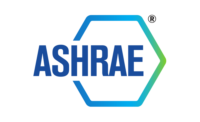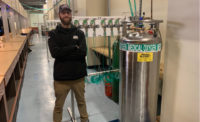Design professionals are mobilizing to respond to the COVID-19 pandemic. Their initiatives, many just getting under way, range from educating other practitioners in best practices in health care design to offering governments assistance with response and recovery, especially relating to surge beds. Practitioners are also warning officials that haste in creating temporary treatment facilities can create unintended negative consequences.
Looking beyond the immediate crisis, designers are brainstorming the ways codes and standards can be improved to prevent disease transmission in buildings. For example, the leadership of ASHRAE has asked its environmental health committee to develop an effort to provide guidance on how buildings can be used to protect occupants from germs both during the crisis and, in the longer term, how to prepare buildings better for future epidemics.
Disease Transmission
This applies to not only addressing issues of health care facility capacity, but also the work, home, public and recreational environments in which most disease transmission occurs.
“Our guidance will also include recommendations for emergency measures such as setting up temporary field hospitals in convention centers, arenas and indoor stadia to deal with surges,” said William P. Bahnfleth, chair of the new task force, an ASHRAE 2013-2014 president and a professor of architectural engineering at Pennsylvania State University.
Through university research, Bahnfleth also is developing improved engineering controls that may help reduce risk of disease transmission in buildings in the future.
“This is an all-hands-on-deck situation, and it is heartening to see how many professionals and scientists who have something to contribute are sharing their time and knowledge,” he said.
Architects are not sitting still, either. At the national level, on March 23, Rachel Minnery, the American Institute of Architects senior director for resilience, adaptation, and disaster assistance, “virtually” convened some 30 leaders of AIA member groups and committees to share critical needs, best practices/examples, and formulate actions to assist officials and hospitals.
“We needed to hear observations from the ‘front lines’ and anticipate short and long-term impacts related to the built environment,” said Minnery.
Subgroups represented were public-sector architects working at federal, state, and local government levels; the academy of architecture for health; and the design and health leadership group. Leaders of the design for aging committee, the disaster assistance committee, the housing and community development group, and the resilience and adaptation advisory group were also in attendance.
Many architects either working directly for hospital institutions or on retainer for hospitals are busy right now adapting or allocating new space to accommodate the surge of patients, said Minnery. AIA will support these architects by sharing and creating guidance to make this possible in less-than-ideal conditions, she added.
Lessons From Virus Hot Zones
“Most state health departments are not providing policy on preparing alternative provisions, so there’s tremendous value in sharing what we are learning about policies and practices from the virus “'hot zones,’” Minnery said. For instance, AIA members can help advise on considerations for assessing spaces, sites, or buildings for their suitability in adapting to the types of surge needed.
Traci A. Hanegan, chair of ASHRAE’s health care facilities technical committee (TC 9.6) and a principal mechanical engineer with Coffman Engineers Inc., cautions that some ideas for modifications to add treatment capacity create unintended consequences or other concerns.
For example, some ways to segregate patients are beneficial to the patients but not to the health care providers, she said. “We have been able to provide input on how to create space for patients while keeping the safety of our health care providers in mind and still preserving life-safety provisions,” she added.
Members of TC 9.6 and the committee for ventilation of health care facilities (Standard 170) have been working to get out guidance that can be implemented immediately to help hospitals and clinics cope with the increasing volume of COVID-19 cases. TC 9.6 members met via conference call a couple of weeks ago to discuss developing events and the committee’s continued response.
TC 9.6 and the Standard 170 committee in collaboration with members of the American Society for Health Care Engineering (ASHE) have prepared a detailed presentation already presented to groups outside ASHRAE and to ASHRAE chapters. The presentation includes guidance on how to create additional observation/segregation rooms for a small-scale admission surge as well as the establishment of wards/suites for a large-scale surge. Online meetings are the virtual venues for the presentations.
The groups also reviewed two guidance documents on how facilities can create patient segregation areas and deal with surge conditions. A 51-page document, named COVID 19 and downloadable free of charge, was developed through a collaboration of TC 9.6 and the Standard 170 committee, with ASHE input.
“It was an outgrowth and elaboration of the supporting info we provided to the ASHE webinars,” said Michael P. Sheerin, CEO of TLC Engineering Solutions and chair of the Standard 170 committee.
“Some of our committee members also provided support information” for ASHE’s recent webinar addressing COVID-19, added Hanegan.
Group of Experts
For the ASHRAE task force, Bahnfleth is in the process of assembling a high-level group of experts in resilience, security, construction, public health, and medicine. The charge will primarily be to communicate, coordinate, and plan.
“We will rely on the expertise of our members, chapters, and committees, supported by ASHRAE staff, to do the necessary work in as timely a manner as possible,” said Bahnfleth.
According to research papers published in the past few weeks, ASHRAE Standard 170 may already have had a beneficial impact by serving as a guide for design of existing infection isolation, intensive care, and critical care rooms in countries overseas that have been most severely affected by this virus, he added.
On a local level, Bahnfleth has been answering questions in his areas of expertise, which include HVAC systems generally and ultraviolet germicidal irradiation, particle filtration, and ventilation.
“I post items of interest on social media and try to answer questions, clear up misconceptions and provide reliable information when I can,” he said.
Hanegan is also involved with a COVID-19 team, including ASHRAE members and representatives of industry and other professional groups.
“We have a weekly call to discuss emerging issues and ideas and to provide responses to questions that come up related to COVID-19,” she said.
Locally, her firm, Coffman Engineers, based in Spokane, Washington, has been answering calls and emails from clients and health care facilities looking for assistance in managing and adapting their medical gas, life safety, and HVAC systems.
“We are thankful that facilities considering modifications to their building systems are reaching out for guidance,” said Hanegan.
Reduce Pathogen Spread
Specifically, Hanegan continues to educate people, through her LinkedIn page and other means, about her favorite topic: the importance of good indoor air hydration -- minimum 40% relative humidity to maximum 60% RH -- to reduce pathogen spread and improve the body’s immune response and healing.
“Many people think that dry air is best and are unaware of how dry air allows airborne pathogens to travel further and how the dry air impairs our bodies defenses against infection,” she says. “A colleague, Dr. Stephanie Taylor, is providing daily updates on her LinkedIn page to help people better understand this impact during the pandemic,” said Hanegan.
According to recent research, RH is really the marker, even more so than absolute humidity, said Hanegan.
“Everyone knows high humidity can be a problem with mold growth, though most don’t realize that mold needs liquid water and cannot get water from vapor, she said. “Most people then think that drier is better, but below 40% RH has all kinds of negative impacts on our health.”
Illya Azaroff, the AIA New York State (AIANYS) disaster coordinator and founding co-chair of AIA New York (AIANY)’s committee for designing for risk and reconstruction, is working on initiatives at both AIA national, state and local levels.
“We have an extensive series of working groups that are tackling various sectors/aspects of the COVID19 virus,” said Azaroff, also founding director of +LAB architect PLLC.
Deployable Prototypes
At the national level, Azaroff is working with a team on negative pressure tents and building retrofits in the U.S. and throughout the Caribbean.
“Our first deployable prototypes are being set up in South Florida,” said Azaroff.
There are suppliers, including Blu-Med Response Systems, that sell equipped deployable hospital units, said Azaroff.
ZORO’s online catalog has a 52-bed FSI Complete Medical Surge Capacity/Field Hospital System for $749,724.29. The problem: It is out of stock.
AIANYS has, at the request of the New York department of state, evaluated and identified buildings throughout the state that have a capacity of at least 1,000 occupants.
“We are continuing to work with the New York department of state on next steps,” said Azaroff, adding it is too soon to provide more specifics about the inventory and its intended use.
AIANY and AIANYS have convened several advisory teams from the AIA health facilities committee along with the design for risk and reconstruction committee. These committees have connected with New York City officials, including the emergency management team, to offer expertise and aid in identifying hospital surge and temporary facilities.
“The AIA and our members, particularly through our AIA State Disaster Coordinator Network, are making themselves available in any ways we can to further address the immediate crisis,” said Minnery.
But there also is a need to plan for recovery and resumption of normal or near-normal life, she said.
“To that end, we are anticipating the concerns building owners and occupants may have for a resurgence of the virus or another epidemic,” added Minnery.
Beyond the immediate crisis, the AIA member leaders convened by Minnery have been asked to consider and offer ways to redesign schools, housing, workplaces, fitness centers, and other spaces so that quarantine isn’t the only viable stopgap to mitigate disease transmission. A question posed to them is, “How can buildings be designed to address emergency situations and therefore be designed to service communities in multiple ways?”
In line with this, Minnery says the group will document collective lessons learned during this emergency to debrief design practitioners about ways to improve building codes and other standards to reduce the chances of another pandemic.
This article first appeared on Engineering News Record's website on March 24. To see the original post in its entirety, click here.
[For ENR’s latest coverage of the impacts of the COVID-19 pandemic, click here]





